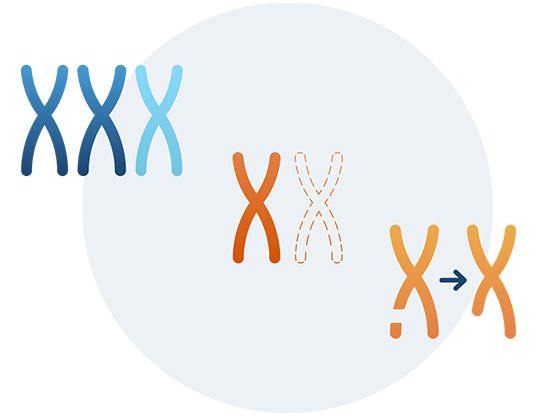- Section 1
-
Lesson 1
-
Last Lesson Experience

SNP vs. Counting
Compare genetic testing methods for accurate chromosomal analysis
The SNP vs. Counting course is designed to provide healthcare providers, genetic counselors, and laboratory staff with a deep understanding of the two primary methodologies used in noninvasive prenatal testing (NIPT) to detect chromosomal abnormalities: Single Nucleotide Polymorphism (SNP)-based testing and counting-based testing. The course begins with an overview of the role of NIPT in prenatal care, explaining why accurate chromosomal assessment is critical for identifying conditions such as trisomy 21 (Down syndrome), trisomy 18 (Edwards syndrome), trisomy 13 (Patau syndrome), and sex chromosome aneuploidies.
Learners will first explore counting-based NIPT, which relies on measuring the relative amount of cell-free DNA from each chromosome in maternal plasma. This method compares the number of DNA fragments corresponding to each chromosome and uses statistical analysis to determine whether an extra or missing chromosome is present. Participants will learn the strengths and limitations of counting-based testing, including sensitivity, specificity, and potential challenges in cases of maternal mosaicism, multiple gestations, or low fetal fraction.
Next, the course introduces SNP-based NIPT, a method that analyzes specific single nucleotide polymorphisms in maternal and fetal DNA to detect chromosomal abnormalities. Learners will understand how SNP-based testing can distinguish maternal and fetal contributions, detect triploidy, identify vanishing twins, and more accurately determine zygosity in multiple pregnancies. The course highlights how SNP-based testing provides additional resolution and confidence in complex cases, helping healthcare providers make better-informed clinical decisions.
The course also includes comparative analysis, showing when SNP-based testing may be preferred over counting-based methods, and vice versa. Real-world case studies demonstrate scenarios such as low fetal fraction, IVF pregnancies, or unexpected maternal genetic variations, and guide learners on interpreting results, communicating risk, and recommending follow-up diagnostic testing when needed. Participants will learn how to explain these technical differences to patients in simple, clear language, ensuring informed decision-making without overwhelming them with scientific jargon.
Interactive exercises include scenario-based interpretation, where learners review hypothetical patient results from SNP and counting methods and decide on appropriate counseling or next steps. Additional sections cover the implications for Natera’s product suite, such as Panorama, which utilizes SNP-based analysis to provide highly accurate noninvasive prenatal testing, and how understanding these methodologies can improve patient communication, trust, and care outcomes.
By the end of the course, participants will be able to define and differentiate SNP-based and counting-based NIPT methods, interpret test results accurately, explain the benefits and limitations of each approach to patients, and apply this knowledge to guide clinical recommendations. Learners will leave confident in integrating these testing methodologies into practice, supporting patient care, and collaborating effectively with laboratory and counseling teams to ensure precise and meaningful genetic testing results.
